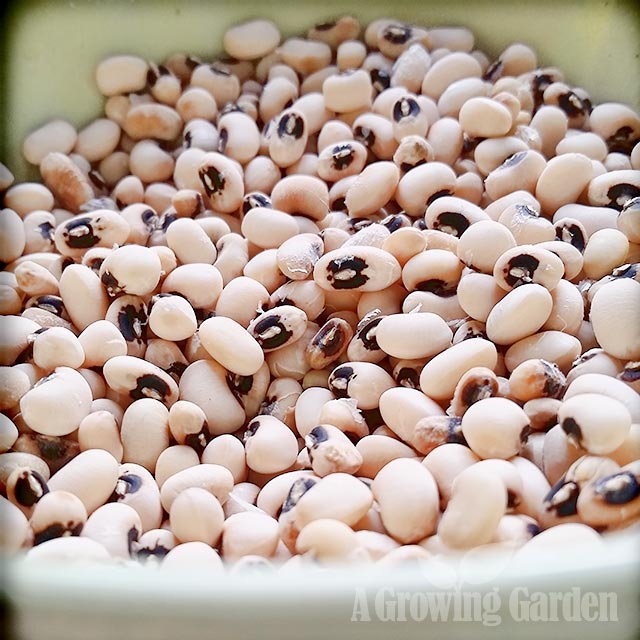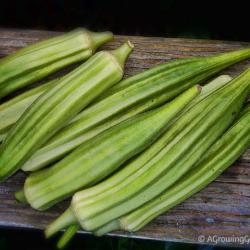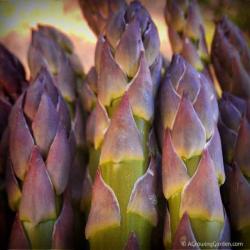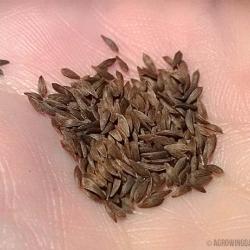
Did you know that a common Southern tradition to bring luck and good fortune in the new year is to eat black-eyed peas on New Year's Day? I didn't grow up in the south, but since I live in south-eastern Virginia now, I figured I'd try some black-eyed peas today. Can't hurt, right?
I didn't have to go far to get some for today ... I grew black-eyed peas this year in the garden and have a ton of them!
I'm hoping that a ton of black-eyed peas will equal a ton of luck in 2015!
Every year I try to grow something new and this year one of my newbie plants was black-eyed peas. Other than thinking they were a bush variety (which is what it said on the seed packet!) and the fact that they ended up being an enormous vine variety (seriously, they got to be at least 10 feet tall!) that we had to scramble to put on trellises well after they should have been, they were super easy to grow.
Black-eyed peas are little white beans with a single black spot on them, hence their name.

If you can grow beans, you should be able to grow black-eyed peas too. Like most beans, they come in both bush (determinate) and vine (indeterminate) varieties. Bush types are usually easier to grow and don't require a trellis or support of any kind (but they do require a strong back to pick them!). Vine varieties will usually produce for a longer period than bush types, but get very, very tall and require some serious support to get them off of the ground.
Black-eyed peas need about 100 days of warm weather to grow to maturity and, like other beans, are planted directly outside in spring after the last frost. Bush varieties of black-eyed peas are usually planted in rows and vining types can be planted in rows or really just about anywhere where they can climb. Seeds should be planted about 1 - 1 1/2 inches deep and about 4 inches apart. The plants will do best in a location where they receive full sun.
Although I've never tried them (maybe next year!), I've read that you can eat the young leaves of black-eyed pea plants. The beans can be eaten as pods when they are green and tender, or you can wait until the pod fully matures and dries out to harvest them as dried beans. I let mine dry this year.
I've never cooked with black-eyed peas before, so I had to do some research for recipes. I've decided to go with a "Spicy Black-Eyed Peas" recipe from Paula Deen for today. I figure that, for a southern dish, you can't go wrong with a recipe from Paula Deen. Oh, and it has bacon in it ... enough said!












Join the Conversation!